Anhui Feichun Special Cable Co.,Ltd Li.wang@feichuncables.com
Why Are AS/NZS Type 409 Mining Cables the Preferred Choice for Underground Operations and What Makes Them Superior to Alternative Cable Solutions?
Discover why AS/NZS Type 409 1.1 to 22 KV mining cables excel in underground operations. Learn about their flexible design, EPR insulation, compliance with AS/NZS 2802:2000, and advantages over Type 441, 440, and other mining cable alternatives for draglines, shovels, and drilling equipment.
Li.wang@Feichun Cable
7/24/20258 min read

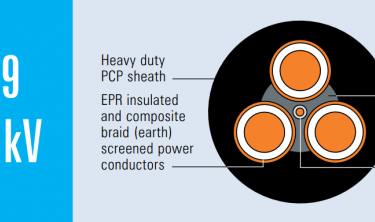
Introduction
In the demanding world of underground mining operations, the choice of electrical infrastructure can mean the difference between seamless productivity and costly downtime. Among the specialized cables designed for these harsh environments, AS/NZS Type 409 mining cables have emerged as a preferred solution for flexible feeder applications, particularly as trailing cables for heavy machinery and handheld equipment.
These cables represent a critical component in mining operations, designed specifically to withstand the extreme conditions found in underground environments while maintaining electrical integrity and operational flexibility. Unlike conventional industrial cables, AS/NZS Type 409 mining cables must comply with stringent Australian and New Zealand standards, specifically AS/NZS 2802:2000, which governs multicore elastomer-insulated flexible cables for mining applications.
The significance of specialized mining cables cannot be overstated in modern mining operations. These cables serve as the electrical lifeline for draglines, shovels, drills, and various handheld tools that operate in confined underground spaces where flexibility, durability, and safety are paramount concerns.
Understanding AS/NZS Type 409 Mining Cable Specifications
Core Design and Construction
AS/NZS Type 409 mining cables are engineered as flexible feeders primarily intended for trailing applications rather than continuous reeling operations. This distinction is crucial for understanding their optimal use cases and performance characteristics in mining environments.
The cable's construction begins with flexible stranded tinned copper conductors, which provide excellent electrical conductivity while resisting corrosion in the humid, chemical-laden atmosphere typical of underground mining operations. The tinning process creates a protective barrier against oxidation, extending the cable's operational lifespan significantly compared to bare copper alternatives.
Advanced Insulation Technology
The insulation system employs Ethylene Propylene Rubber (EPR), a synthetic elastomer known for its exceptional electrical properties and environmental resistance. EPR insulation offers superior performance in wet conditions, maintaining its dielectric strength even when exposed to moisture, oils, and various chemicals commonly encountered in mining operations.
This insulation is complemented by semiconductive tape and a composite screen system consisting of tinned copper braiding interwoven with polyester yarn. This dual-material approach provides electromagnetic shielding while maintaining flexibility, crucial for trailing applications where the cable experiences continuous movement and flexing.
Protective Sheathing Systems
The outer protection consists of an extra heavy-duty elastomer sheath, typically specified as XHD-90-CSP (Chlorosulfonated Polyethylene) or XHD-85-PCP (Polychloroprene). These materials offer exceptional resistance to abrasion, flame propagation, and chemical attack while maintaining flexibility across a wide temperature range from -25°C to 90°C.
A distinctive feature of Type 409 cables is their central semiconductive cradle, which provides mechanical support and additional protection for the power cores. This design element enhances the cable's ability to withstand the mechanical stresses associated with trailing applications while maintaining electrical stability.
Voltage Rating Capabilities
AS/NZS Type 409 cables are available in voltage ratings ranging from 1.1/1.1 kV to 22/22 kV, accommodating various mining equipment requirements. This voltage range makes them suitable for medium-voltage applications common in mining operations, from smaller handheld tools to large draglines and excavators.
Compliance with AS/NZS 2802:2000 Standards
Standard Overview and Classification
The AS/NZS 2802:2000 standard establishes comprehensive requirements for multicore elastomer-insulated flexible cables used in surface and underground mining operations, excluding coal mining applications. This standard recognizes two distinct classes of cables based on insulation thickness and intended applications.
Type 409 cables fall under Class 1 classification, characterized by thinner insulation walls compared to Class 2 alternatives. This classification makes them particularly suitable for applications where flexibility is prioritized over maximum mechanical protection, such as trailing applications for mobile equipment.
Rigorous Testing Requirements
Compliance with AS/NZS 2802:2000 mandates several critical performance tests. The high voltage AC test subjects cables to elevated voltages for five minutes, ensuring insulation integrity under stress conditions. For Class 1 cables like Type 409, this is followed by a bending test combined with partial discharge testing, simulating the mechanical stresses and electrical conditions encountered during actual use.
These testing protocols ensure that Type 409 cables maintain their electrical stability and safety characteristics even when subjected to the repetitive flexing motions typical of trailing applications. The partial discharge test is particularly important as it detects potential insulation weaknesses that could lead to failure in wet underground conditions.
Comparative Analysis: Type 409 vs. Alternative Mining Cable Solutions
Type 409 vs. Type 441: Flexibility Versus Durability
The comparison between Type 409 and Type 441 mining cables illustrates the trade-offs between flexibility and mechanical protection. While both can be manufactured as Class 1 cables, Type 441 is also available in Class 2 configuration with significantly thicker insulation.
Case Study: Copper Mine Drilling Operations A major copper mining operation in Western Australia initially used Type 441 cables for their drilling equipment but experienced difficulties with cable handling in confined underground spaces. The thicker insulation and sheath of the Type 441 cables created handling challenges for operators working in narrow tunnel environments. After switching to Type 409 cables, the operation reported improved equipment maneuverability and reduced operator fatigue, though they needed to implement more frequent cable inspections due to the thinner protective layers.
Type 441 cables include three earth cores and one pilot core, making them more suitable for applications requiring comprehensive earthing systems. However, this additional complexity comes at the cost of increased diameter and reduced flexibility compared to Type 409.
Type 409 vs. Type 440: Trailing Versus Reeling Applications
Type 440 mining cables, while sharing similar voltage ranges (1.1/1.1 kV to 22/22 kV), are specifically designed for heavy-duty reeling applications. They incorporate three large pilot cores and construction optimized for the mechanical stresses of continuous winding and unwinding operations.
The key distinction lies in their intended applications: Type 409 excels in trailing scenarios where cables follow moving equipment without being wound onto reels, while Type 440 performs better in applications requiring frequent reeling operations such as dragline power feeds.
Type 409 vs. High-Voltage Alternatives (Type 275 and Type 2S)
When compared to high-voltage mining cables like Type 275 and Type 2S, Type 409 offers superior flexibility at the expense of maximum voltage capability. Type 275 cables are copper-screened and designed for longwall lighting and high-voltage equipment, but their construction prioritizes electrical performance over mechanical flexibility.
Practical Application Example: Surface Mining Shovel Operation A surface mining operation in Queensland utilized Type 2S cables for their electric shovels but found that the reduced flexibility created operational challenges during equipment repositioning. The cables' copper screening provided excellent electrical performance but limited the equipment's mobility. By switching to Type 409 cables for trailing applications while retaining Type 2S for fixed installations, the operation achieved optimal performance across different application scenarios.
Performance Advantages in Harsh Mining Environments
Superior Durability Characteristics
Type 409 cables demonstrate exceptional performance in the challenging conditions typical of mining operations. The combination of EPR insulation and heavy-duty elastomer sheathing provides resistance to abrasion from rock debris, chemical exposure from various mining processes, and flame propagation in the event of electrical faults.
The flame-retardant properties are particularly crucial in underground environments where fire suppression can be challenging. The cable's materials are formulated to resist ignition and limit flame spread, providing additional safety margins for mining personnel.
Optimal Flexibility for Dynamic Applications
The mechanical design of Type 409 cables prioritizes flexibility without compromising electrical integrity. This characteristic proves essential in trailing applications where cables must accommodate the complex movements of mobile mining equipment while maintaining reliable power transmission.
The semiconductive cradle design distributes mechanical stresses across the cable cross-section, preventing localized stress concentrations that could lead to insulation failure. This feature is particularly important in applications where cables experience frequent directional changes and varying tension loads.
Electrical Stability in Challenging Conditions
Underground mining environments present unique electrical challenges, including high humidity, temperature variations, and electromagnetic interference from various equipment sources. Type 409 cables address these challenges through their composite screening system and semiconductive components.
The tinned copper braiding provides electromagnetic shielding while the polyester yarn component maintains flexibility. This combination ensures stable electrical performance even in environments with significant electromagnetic noise from motors, drives, and other electrical equipment.
Real-World Applications and Case Studies
Heavy Machinery Power Supply
Type 409 cables serve as primary power feeds for various heavy mining equipment. In dragline operations, these cables must withstand the continuous movement of the equipment while maintaining reliable power transmission for the high-power motors and control systems.
Case Study: Iron Ore Mining Dragline Operation An iron ore mining operation in the Pilbara region implemented Type 409 cables for their dragline fleet after experiencing frequent failures with conventional industrial cables. The harsh desert environment, combined with the abrasive nature of iron ore dust, had created significant challenges for cable longevity. After implementing Type 409 cables, the operation reported a 40% reduction in cable-related downtime and extended maintenance intervals from quarterly to bi-annual inspections.
Handheld Tool Applications
In underground mining operations, handheld tools such as rock drills, grinders, and cutting equipment require flexible power connections that can accommodate operator movement and positioning requirements. Type 409 cables provide the necessary flexibility while maintaining safety standards required for personnel-operated equipment.
Transformer to Distribution Connections
Type 409 cables frequently serve as feeder connections between mining transformers and gate-end distribution boxes. These applications require cables capable of handling medium-voltage power transmission while accommodating the physical layout constraints of mining installations.
Technical Specifications and Selection Criteria
Temperature Performance Range
The operational temperature range of -25°C to 90°C makes Type 409 cables suitable for diverse mining environments, from cold climate surface operations to hot underground workings. The EPR insulation maintains its electrical and mechanical properties across this temperature range, ensuring consistent performance regardless of environmental conditions.
Conductor Configuration Options
Type 409 cables are available in various conductor configurations to match specific application requirements. Standard configurations include three-core and four-core options, with conductor sizes ranging from 25mm² to 400mm² depending on power requirements and voltage ratings.
Installation and Handling Considerations
The flexibility characteristics that make Type 409 cables ideal for trailing applications also simplify installation in confined spaces. The smaller diameter compared to Class 2 alternatives reduces installation complexity while maintaining adequate protection for the intended applications.
Maintenance and Operational Best Practices
Inspection Protocols
Regular inspection of Type 409 cables should focus on signs of mechanical damage, particularly in areas subject to abrasion or sharp edges. The thinner insulation compared to Class 2 cables requires more frequent visual inspections, typically recommended at weekly intervals for high-usage applications.
Handling Procedures
Proper handling techniques are crucial for maximizing Type 409 cable lifespan. Avoiding excessive bending radii, protecting against sharp edges, and implementing proper support systems help prevent premature failure modes.
Environmental Protection
While Type 409 cables are designed for harsh environments, additional protection measures such as cable guards, proper routing, and contamination prevention can significantly extend operational life and reduce maintenance requirements.
Future Developments and Industry Trends
The mining cable industry continues to evolve with advances in material science and manufacturing techniques. Future developments in Type 409 cables may include enhanced environmental resistance, improved flexibility characteristics, and integrated monitoring capabilities for predictive maintenance applications.
Sustainability considerations are also driving innovation in cable design, with manufacturers exploring recycled materials and improved end-of-life disposal options while maintaining the performance characteristics required for mining applications.
Conclusion
AS/NZS Type 409 mining cables represent a specialized solution optimized for the unique requirements of underground mining trailing applications. Their combination of flexibility, durability, and electrical performance makes them particularly suitable for mobile equipment operations where conventional cables would prove inadequate.
The compliance with AS/NZS 2802:2000 standards ensures that these cables meet the rigorous safety and performance requirements essential for mining operations. When compared to alternative cable types, Type 409 offers distinct advantages in applications prioritizing flexibility and maneuverability over maximum mechanical protection.
For mining operations seeking reliable electrical infrastructure for draglines, shovels, drills, and handheld equipment, Type 409 cables provide a proven solution backed by comprehensive testing and real-world performance validation. Consulting with specialized manufacturers such as Znergy Cable or Prysmian can help ensure optimal cable selection and specification for specific mining applications, ultimately contributing to safer, more efficient mining operations.
The investment in appropriate cable infrastructure pays dividends through reduced downtime, improved safety margins, and enhanced operational flexibility—critical factors in the competitive and challenging world of modern mining operations.

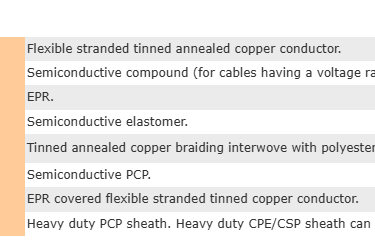
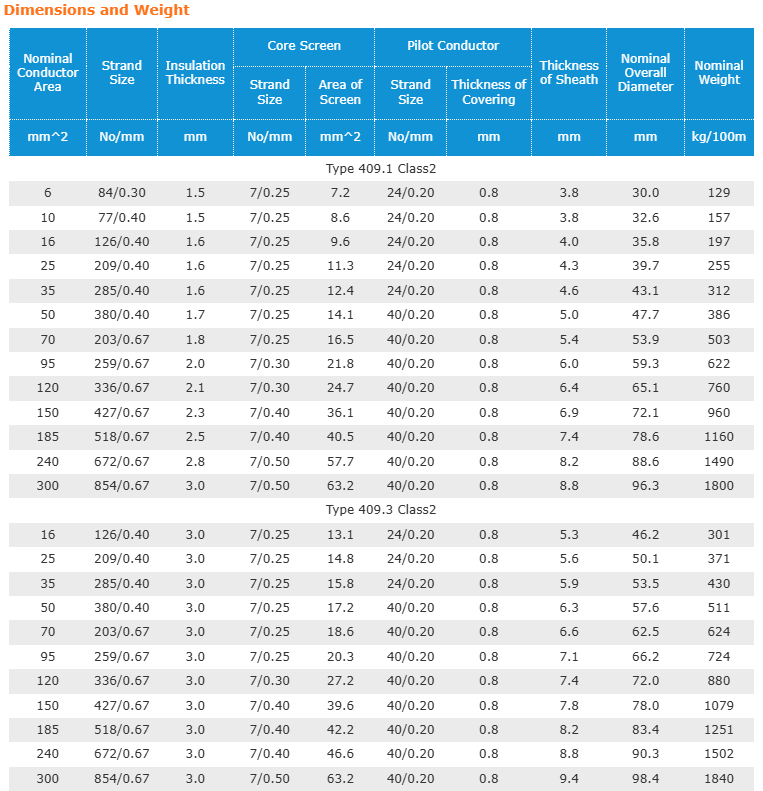

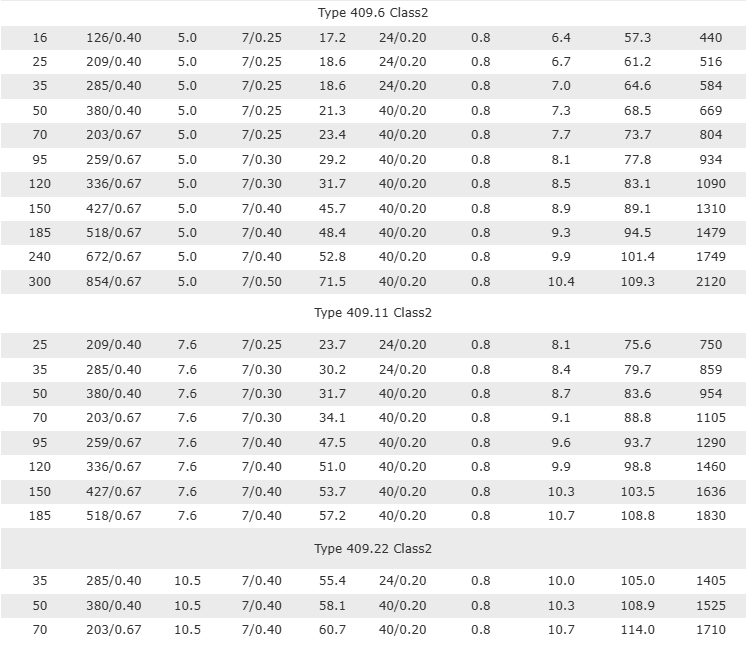

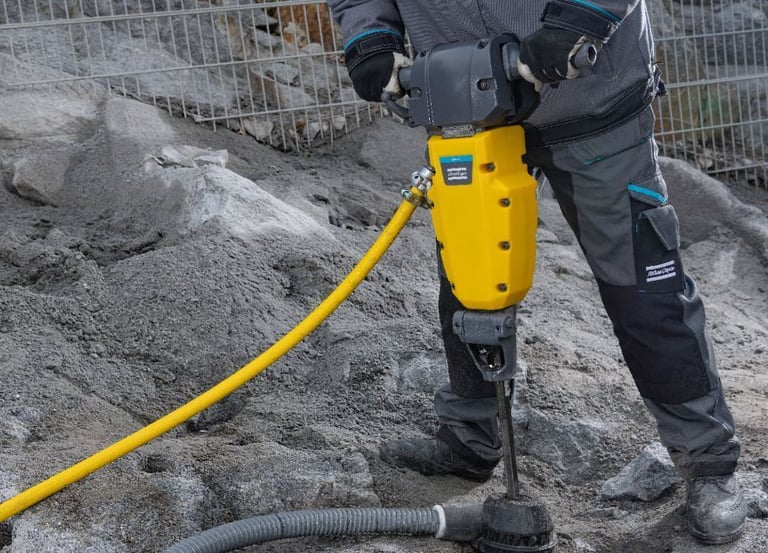

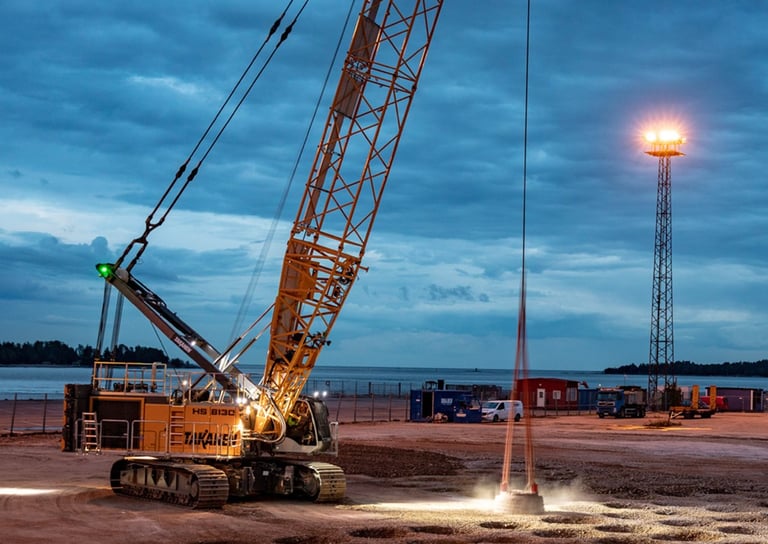


Email Address: Li.wang@feichuncables.com
© 2025. All rights reserved.


One-click to Quickly Contact
Products
Offshore & Marine Cable
XLPE Cable
Contact
Company
Location:
Building A Private Science and Technology Park, Hefei Economic and Technological Development Zone, Anhui Province, China
